Intragastric Balloon Placement
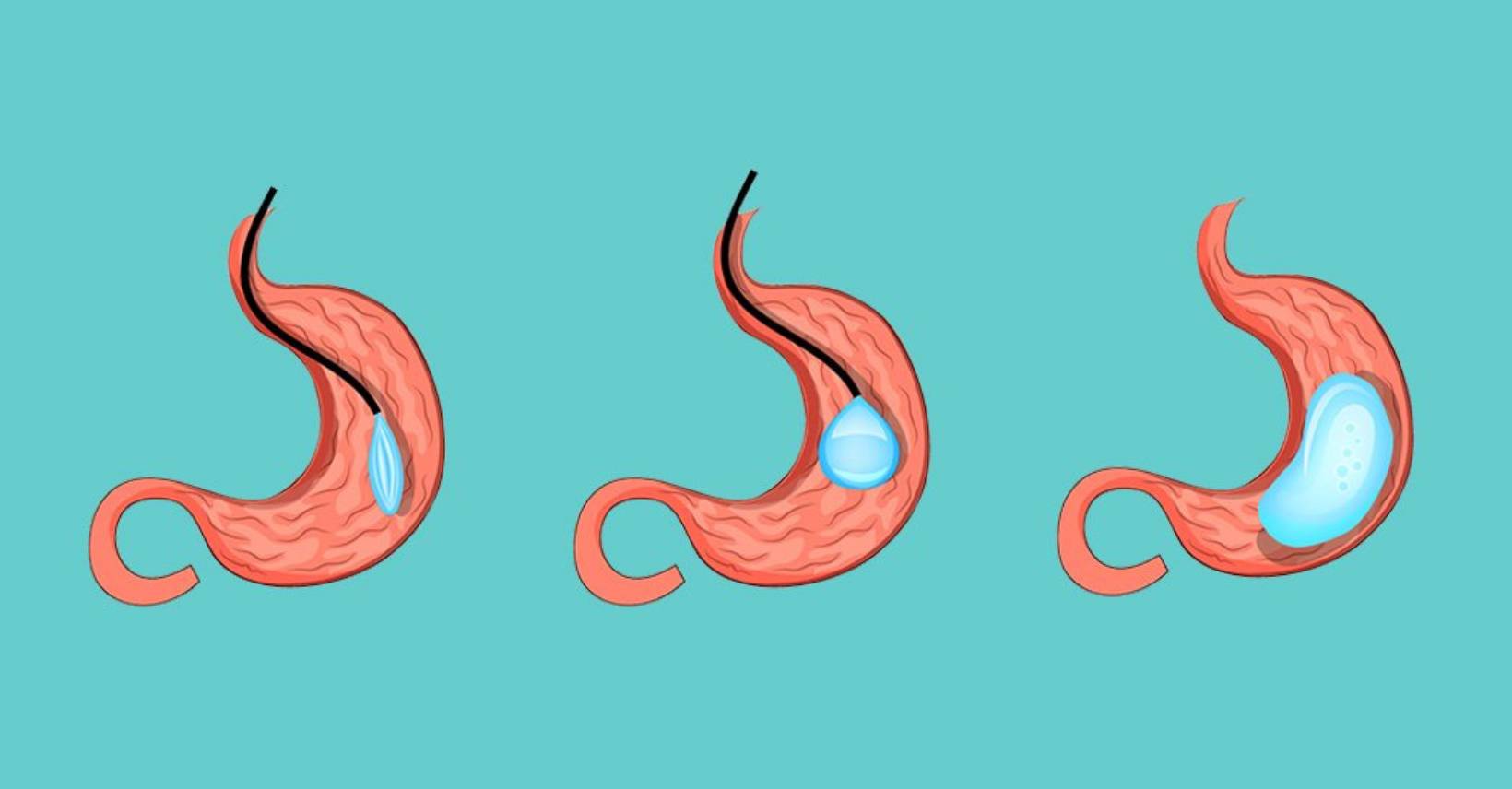
The procedure is performed by a gastroenterologist or bariatric surgeon and typically follows these steps:
1- Preparation: Before the procedure, you will be evaluated thoroughly, including a review of your medical history, a physical examination, and possibly blood and imaging testing. Your healthcare provider will also discuss the procedure’s risks, benefits, and possible outcomes.
2- Anesthesia: Typically, sedation or mild anesthesia is used to ensure the patient’s comfort throughout the procedure.
3- Balloon Insertion: Using an endoscope, a deflated silicone inflatable is inserted into the stomach through the throat and esophagus. The endoscope is a flexible tube with a camera and illumination at its apex, allowing the physician to view the interior of the stomach.
4- Balloon Inflation: Once the balloon is adequately positioned in the stomach, a small catheter affixed to the endoscope is used to fill it with sterile saline solution. The quantity of saline used varies, but the inflated balloon typically occupies a significant portion of the stomach, producing a sensation of satiety and reducing the available space for food.
5- Confirmation and Removal of Endoscope: After the balloon has been inflated, the endoscope will be extracted from your stomach in a very cautious manner.
6- Recovery: You will be monitored until the sedation wears off in a recovery area. Although the majority of patients can return home the same day as their procedure, a few may require overnight observation.
Post-Procedure Period: After intragastric balloon placement, you will need to make significant dietary and lifestyle adjustments to maximize the procedure’s benefits. Your healthcare provider will provide you with a specialized diet plan and schedule regular follow-up appointments to monitor your progress and treat any potential complications or discomfort.
Balloon Removal: Typically, intragastric balloons are intended to reside in the stomach for approximately six months. At the conclusion of this time period, the balloon is deflated and removed in a manner analogous to its insertion. Typically, the excision process takes between 20 and 30 minutes and is performed under sedation.
Benefits and Considerations of Intragastric Balloon:
- Non-Surgical Option: When compared to other surgical methods of weight loss, such as gastric bypass or sleeve gastrectomy, intragastric balloon implantation is a less intrusive option.
- Short Recovery Time: Due to the fact that it is minimally invasive, recovery time is typically shorter than with conventional surgical procedures.
- Potential Weight Loss: The balloon induces a sense of feeling full, enabling you to consume smaller portions and make healthier food selections, which may result in weight loss.
- Risks and Side Effects: There are potential risks and side effects, including nausea, vomiting, abdominal discomfort, balloon deflation, balloon migration, and uncommon but severe complications such as gastric ulcers or perforation, despite the fact that the procedure is considered safe for the majority of patients.
Remember that the choice to have an intragastric balloon insertion surgery should be taken after extensive consultation with our medical professionals, who can examine your unique health state and weight loss goals. They can offer tailored advice depending on your individual scenario.
Advantages of Intragastric Balloon Procedure:
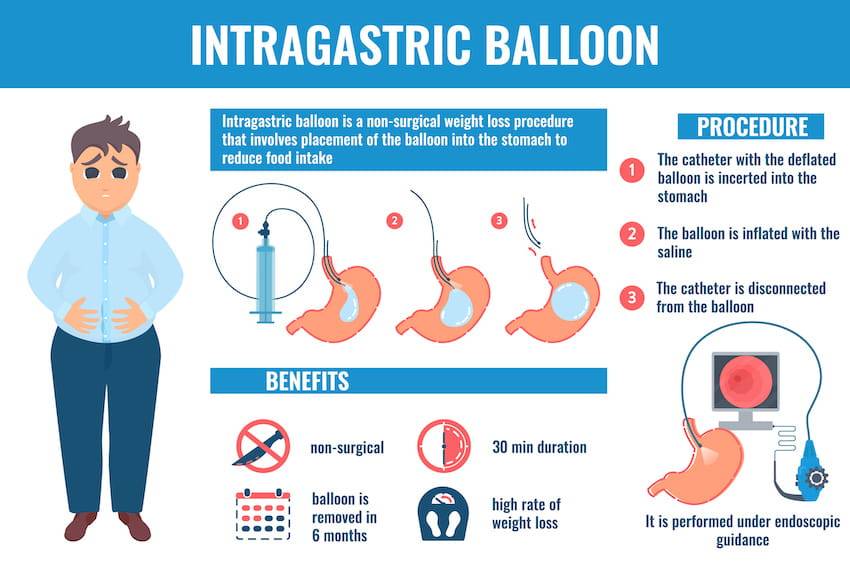
Non-Surgical Approach: Because the insertion of an intragastric balloon is a non-surgical treatment, it minimizes the dangers associated with major surgery and typically has a quicker recovery time than other procedures.
Minimally Invasive: An endoscope is a thin, flexible tube that contains a camera and a light and is used throughout the process. The endoscope is introduced into the mouth of the patient. This indicates that there were neither significant incisions nor scars.
Reduced Appetite: Because the balloon takes up space in the stomach, a person might have a sense of fullness even after eating just smaller meals. This can assist you in consuming less calories and selecting healthier options when it comes to eating.
Short-Term Commitment: In contrast to surgical methods for weight reduction, the intragastric balloon is normally removed after a period of around six months. People who are looking for a short-term solution or those who are hesitant about engaging in long-term treatment may find this option curious.
Risks and Considerations of Intragastric Balloon Procedure:

Nausea and Vomiting: As the patient’s body responds to the presence of the balloon, some patients experience feelings of sickness and vomiting. In most cases, this gets better with time as your body learns to adjust.
Abdominal Discomfort: In the beginning, you can have discomfort, cramps, or a general sense of fullness; however, these symptoms often go away within a few days.
Balloon Deflation or Leakage: Even while it happens very rarely, the balloon has a small chance of deflating or leaking, which would require either its removal or replacement.
Balloon Migration: There is a possibility that the balloon might migrate within the stomach or even make its way into the intestines, however this is a very unlikely occurrence. Appointments for follow-up care should be scheduled at regular intervals. this helps detect any potential issues.
Gastrointestinal Issues: Because of the balloon, there is a possibility that some people will develop symptoms such as acid reflux, indigestion, or heartburn.
Rare Complications: Gastric ulcers, stomach perforation, and pancreatitis are uncommon consequences.
What to Expect After Intragastric Balloon Procedure:
Diet and Nutrition: After the operation, your healthcare practitioner will provide you a particular meal plan that you need to adhere to in order to get the best results. As your stomach adjusts to the balloon, you will need to follow a standard routine that involves starting with liquids, moving on to soft meals, and then progressing to solid foods. The focus here is on having a few nutrient-dense meals throughout the day.
Lifestyle Changes: It is necessary to start healthy lifestyle habits in order to accomplish weight reduction that is lasting. Some of these behaviors include frequent physical exercise and eating mindfully.
Follow-Up Appointments: Your healthcare physician will schedule follow-up consultations with you on a regular basis in order to evaluate your progress, handle any concerns you may have, and verify that the balloon operates as intended.
Balloon Removal: The balloon is deflated and removed using an endoscopic surgery at the finish of its placement time (typically around six months).
Candidates are chosen for the intragastric balloon procedure based on the following criteria:
Individuals with a body mass index (BMI) between 30 and 40 who have tried and been unable to achieve weight loss via changes in their diet and level of physical activity alone may be candidates for insertion of an intragastric balloon. However, eligibility is assessed for each individual based on the results of a comprehensive evaluation performed by a medical doctor.
Intragastric balloon can be a useful tool for kickstarting weight reduction and making good adjustments to one’s eating habits. However, it is essential to go into this treatment with realistic expectations and a commitment to adopting long-term healthy practices in order to have the best possible outcome.
Your consultation with our medical staff, which is knowledgeable in the treatments associated with weight reduction, will assist you in making an educated decision regarding whether or not this choice is appropriate for you.
FAQ about Intragastric Balloon Procedure:
If you take all of the essential measures and listen to your doctor’s instructions, traveling with a gastric balloon is completely safe.
A careful post-operative diet helps you acclimate to the gastric balloon. Fluids exclusively for the first three days will help you acclimate to the balloon, reduce dehydration, and boost energy. This stage should avoid solid foods since they may cause nausea or vomiting.
A gastric balloon can help a person lose between 10 and 30 kg on average. Patients may see a weight loss of 15–20 percent of their starting weight by the time treatment is completed.
Send Us A Message
Useful Links
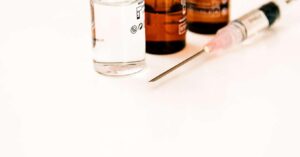
Mesotherapy Hair Loss Treatment
Mesotherapy is a medical procedure that includes injecting a mixture of vitamins, minerals, medicines, and other things directly into the scalp to treat hair loss. It is generally used as a non-surgical treatment for hair loss and is said to encourage hair growth and enhance scalp health. A healthcare expert
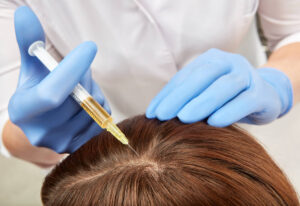
Platelet-Rich Plasma (PRP)
Platelet-rich plasma (PRP) therapy is a medical procedure that has been used to treat a variety of conditions, including hair loss. PRP is made up of concentrated platelets and growth factors derived from the patient’s own blood. These growth factors are thought to encourage hair development and increase the thickness
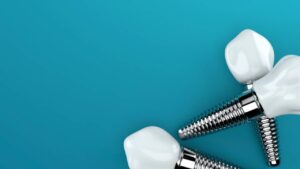
Dental Implants Surgery
Dental implants have been demonstrated to be successful in helping people with tooth loss improve their quality of life. Successful tooth replacement can enhance and restore the patient’s quality of life by improving the bite and providing a better eating experience, and it can also last a long time. Dental


